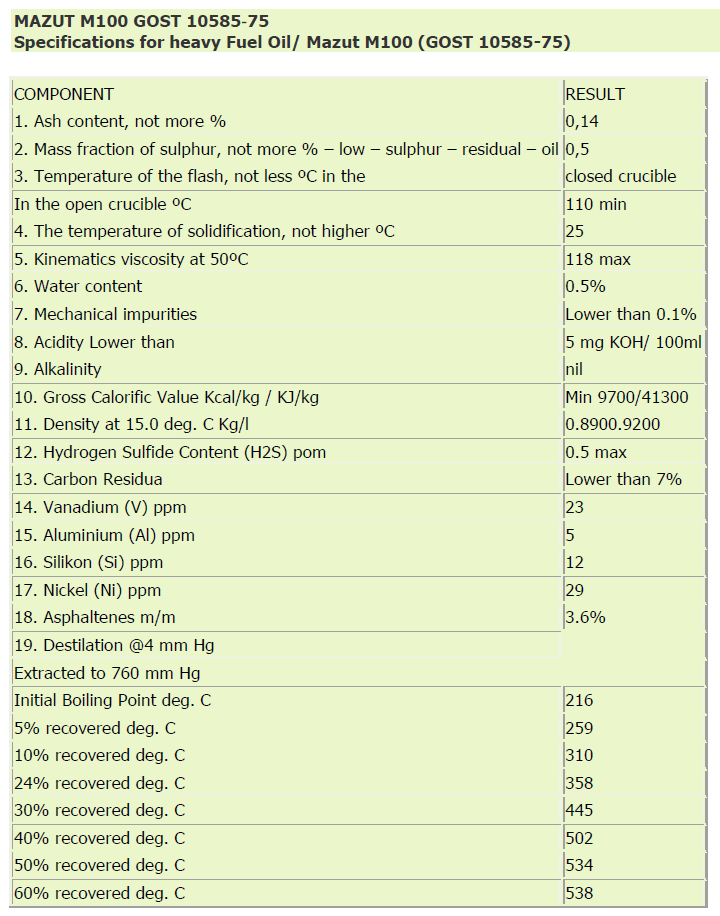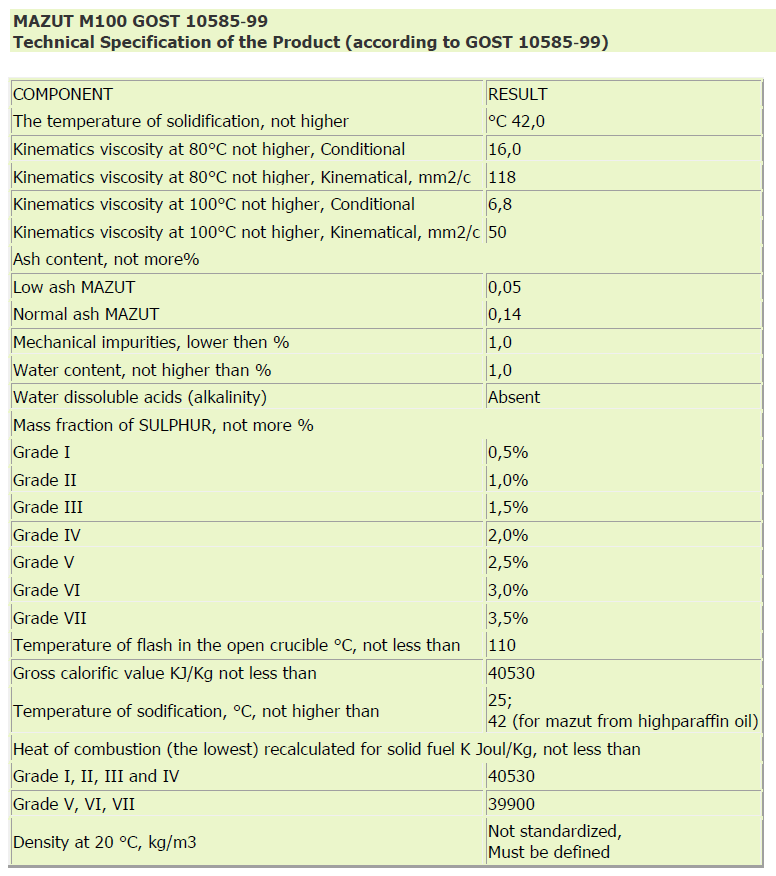
Overview of Mazut
Mazut is a heavy, low-grade fuel oil commonly used in power generation and similar industrial applications. In the United States and Western Europe, it is typically blended or refined into diesel. One well-known type, Mazut-100, is produced according to GOST standards, such as GOST 10585-99. Production is concentrated mainly in Kazakhstan, Azerbaijan, and Turkmenistan. The primary factor in grading mazut is its sulphur content, which greatly influences its quality and environmental impact. Lower sulphur grades are preferred for cleaner combustion and reduced emissions in compliance with environmental regulations.
Mazut 100-75 VLS and 100-99 Grade I: Understanding the Equivalence
Mazut 100-75 VLS and Mazut 100-99 Grade I refer to the same product. GOST combined the former 75 and 99 classifications into a unified seven-grade system under 100-99, though the older 75 label remains widely used, especially in China.
Mazut is classified into different grades based on its sulphur content, which directly affects its quality and environmental impact.
– Very Low Sulphur mazut contains up to 0.5% sulphur, making it the cleanest option.
– Low Sulphur grades have between 0.5% and 1.0% sulphur.
– Normal Sulphur mazut contains 1.0% to 2.0% sulphur, offering moderate purity.
– High Sulphur mazut has 2.0% to 3.5% sulphur, producing higher emissions and generally requiring additional treatment before use.


